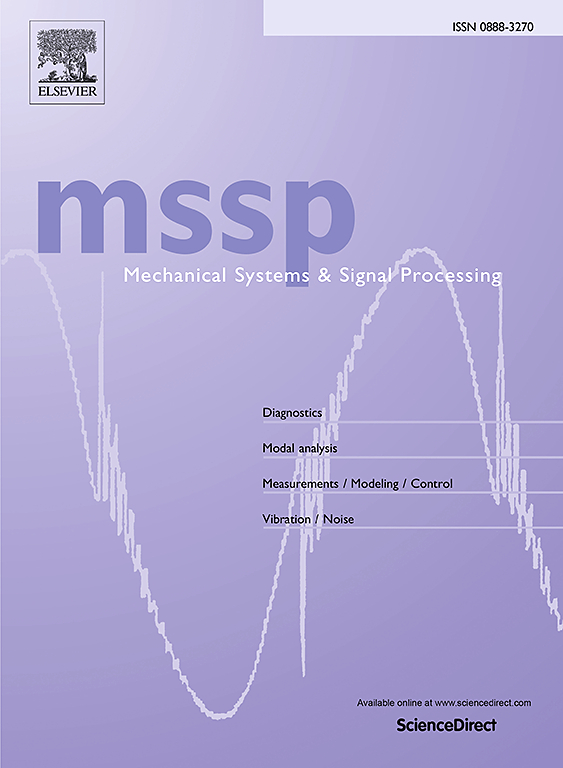基于神经网络的复合材料蜂窝夹层结构空气耦合超声损伤检测方法
IF 7.9
1区 工程技术
Q1 ENGINEERING, MECHANICAL
引用次数: 0
摘要
纤维增强复合材料以其优异的力学性能和可设计性得到了广泛的应用,但与金属材料相比,复合材料的损伤形式更为复杂。在设备使用过程中,定期进行无损检测是保证设备可靠性的关键。空气耦合超声检测(ACUT)以空气为偶联剂,具有非接触、设备简单、无污染等优点,广泛应用于复合材料结构的无损检测。但由于试样与空气的声阻抗差异,导致ACUT检测精度较差,对结果的分析受技术人员经验的影响。为了解决这一问题,提出了一种基于神经网络的损伤检测与成像方法。首先,利用ACUT对复合材料蜂窝夹层结构内不同深度的预埋缺陷进行检测,获得原始超声信号;然后,根据缺陷边界处信号幅度的突变规律,叠加不同阈值下的损伤区域判断结果,进行详细的信号分类和缺陷区域划分。最后,将增强后的信号输入到神经网络中进行结构状态的识别,并将预测结果输出到像素矩阵中形成检测图像。结果表明,训练后的神经网络具有较高的分类准确率;即使面对未知的数据,网络仍然具有很强的鲁棒性和泛化性。与传统方法相比,神经网络只需要a扫描信号即可实现状态预测,无需对不同状态下的信号进行比较,无需依赖人的经验,可有效提高识别效率和可靠性。本文章由计算机程序翻译,如有差异,请以英文原文为准。
A neural network-based air-coupled ultrasonic damage detection method for composite honeycomb sandwich structure
Fiber reinforced composites have been widely used due to their excellent mechanical properties and designability, but the damage forms of composite materials are more complex compared to metals. Regular non-destructive testing (NDT) is crucial to ensure the reliability of equipment during use. Air-coupled ultrasound testing (ACUT), which uses air as the coupling agent, has the advantages of non-contact, simple equipment, and no pollution, and is widely used in NDT of composite material structures. However, the difference in acoustic impedance between the specimen and air results in poor accuracy of ACUT detection, and the analysis of the results is influenced by the experience of the technical personnel. To address this issue, a neural network-based method for damage detection and imaging has been proposed. Firstly, ACUT was used to detect pre-embedded defects at different depths within the composite honeycomb sandwich structure, and the original ultrasonic signals were obtained. Then, based on the pattern of sudden changes in signal amplitude at the defect boundary, detailed signal classification and defect area division were carried out by superimposing the results of damage area judgment under different thresholds. Finally, the signals after augmentation were input into neural networks to identify the state of the structure, and the prediction results are output to a pixel matrix to form a detection image. The results demonstrate that the trained neural network has a high classification accuracy; Even when faced with unseen data, the network still has strong robustness and generalization. Compared with traditional methods, neural networks only require A-scan signals to achieve state prediction, without the need for signal comparison in different states and relying on human experience, which can effectively improve recognition efficiency and reliability.
求助全文
通过发布文献求助,成功后即可免费获取论文全文。
去求助
来源期刊

Mechanical Systems and Signal Processing
工程技术-工程:机械
CiteScore
14.80
自引率
13.10%
发文量
1183
审稿时长
5.4 months
期刊介绍:
Journal Name: Mechanical Systems and Signal Processing (MSSP)
Interdisciplinary Focus:
Mechanical, Aerospace, and Civil Engineering
Purpose:Reporting scientific advancements of the highest quality
Arising from new techniques in sensing, instrumentation, signal processing, modelling, and control of dynamic systems
 求助内容:
求助内容: 应助结果提醒方式:
应助结果提醒方式:


